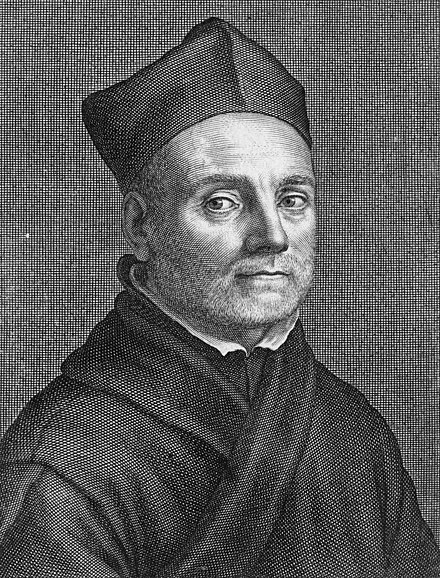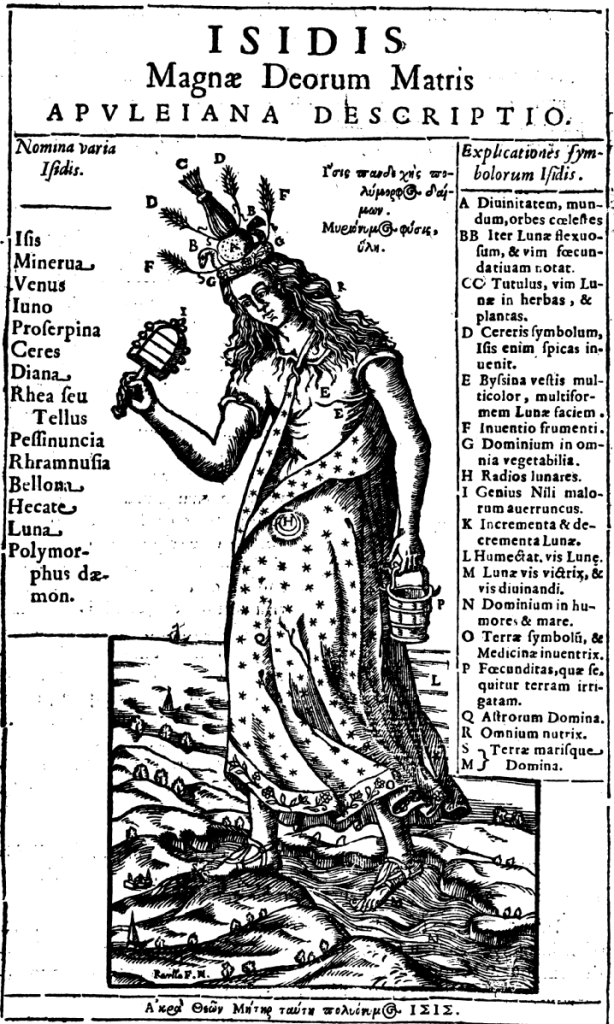Welcome to another edition of Weird Places We Find Isis.
This is an odd story and it connects two phenomena of the 17th century: Egyptomania and Chinoiserie. At the time, Europeans were obsessed both with ancient Egypt and China. What’s more, there was a theory going around that the Chinese civilization had Egyptian roots. I know.
The person who initially came up with that theory is also known as “the father of Egyptology.” His name was Athanasius Kircher, a German Jesuit scholar. He became fascinated with ancient Egypt (and China). He taught himself Coptic and argued, correctly, that Coptic was the last form of the ancient Egyptian language. He also pointed out the connection between Egyptian hieroglyphs and hieratic, a script form of the hieroglyphs that the priests could write more quickly than drawing the glyphs.
The Father of Egyptology
His giant tome on Egyptology—which earned him the Father of Egyptology title and connected Chinese writing with hieroglyphs—was in three volumes and entitled Oedipus Aegyptiacus. Written between 1652 and 1654, it purported to be a decipherment of hieroglyphs, pre-Champollion (who really did unlock the hieroglyphs).
Oedipus Aegyptiacus was not, in fact, a decipherment of the hieroglyphs. What it was is another tale, for another day. The point here is the Egypt-China connection, a story that intrigued Europe for hundreds of years and continues to crop up even later. In 1933, for example, a Japanese scholar connected the hieroglyphs with Chinese ideograms. Then as recently as 2016, a Chinese chemist tried to show that the Shang dynasty had Egyptian connections due to a match of the chemical composition of ancient Chinese and ancient Egyptian bronzes.
In the early 18th century, scholars in France were among those quite interested in the Egypt-China connection. French historian Pierre Daniel Huet said of the Chinese,
One finds among them clear marks of their origin, a great conformity with the habits of the Egyptians, with their ambiguous letters—hieroglyphic and profane—and even affinity between their languages, the doctrine of metempsychosis [reincarnation].
And Huet was not the only one. Other European scholars followed suit. A member of the English Royal Society, Joseph Turberville Needham, who was a biologist, was invited by the Kings of Savoy (who were looking to add scientists to their court) to come to Turin, Italy. In the royal collection, Needham found an intriguing bust that he identified as the Goddess Isis (finally, we get to Isis!) that was carved all over with highly mysterious glyphs, which Needham proposed to study.
A Turin Aside
Today, Turin has a wonderful Egyptian museum, the oldest in the world dedicated to Egyptian antiquities. The museum traces its history to 1630 when an Isis artifact, the Mensa Isiaca, or Tablet of Isis, came to Turin. (Our pal Kircher was involved with this artifact, too.)
The Mensa Isiaca or Tablet of Isis now in the Turin Egyptian Museum
Today, it houses over 30,000 artifacts, with over 6,000 on display. It is one of the largest collections in the world. There was a temple of Isis and Serapis in the Turin area, too, the foundations of which you can see today. The city of Turin has a local legend that Turin actually has Egyptian origins. It’s not strictly true. Yet it did start as a Roman outpost and the Isis-Serapis temple was an important feature of the town from the 1st or 2nd century CE.
Back to Needham
Needham even suggested that the mysterious Bust of Isis must have been acquired at the same time as the Tablet of Isis, providing a secure Isis-basis for his study.
The inscriptions on the bust looked to Needham like Chinese writing, so he sent copies of the inscriptions to a librarian of Chinese books in the Vatican Library. The librarian, Joseph Lucius Wu, confirmed Needham’s suspicions (!?!). Meanwhile, Needham was in Rome copying hieroglyphs from some of the obelisks there, identifying a handful of them as Chinese characters.
His work caused a sensation throughout Europe because by now Europeans could read Chinese…and if Chinese and hieroglyphs were related, perhaps they could finally read the hieroglyphs!
Unfortunately…
As you can see from looking at the copied glyphs, they are not Chinese characters, nor hieratic, nor hieroglyphic. In fact, they look more like some of the magical alphabets, though I can’t identify which one. (Anybody?) Scholars all over Europe began to study the bust in earnest and doubt was cast in voluminous grey clouds over the Chinese-ness of the characters on the Bust of Isis. Champollion himself had occasion to examine the Bust of Isis and declare it a fake.
But a fake what? The Bust of Isis has now been dated to the 17th century and it has been confirmed that it was carved from stone found in the Turin area. But what is it? The image has none of Isis’ characteristic attributes (crown, sistrum, situla), except perhaps for the long curls in the hair and the knotted necklace may have been intended to be some sort of Isis knot.
Some have suggested that the image was an example of the 1700s fad for creating images of people and labeling their faces with zodiacal signs that, I assume, were supposed to be the “cause” of a particular feature and/or to foretell their fate. But the Bust of Isis characters are unlike any zodiacal signs of that period or earlier.
Is it a magical image of some kind? A love or curse talisman? If so, it is on a fairly grande scale with a high level of effort. Is it indeed an Egyptian-ish forgery? The base suggests the shape of a canopic jar and maybe the characters are the best the forger could do to simulate hieroglyphs. And if that’s so, and it is an Egyptianizing fake, then the female head is probably supposed to be Isis. No other Egyptian Goddess was so famous throughout Italy; no other personage of any kind would be so valuable as an art forgery.
What do you think?









